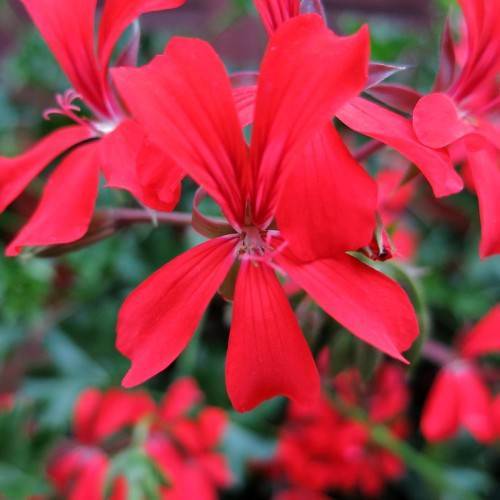
ivyleaf geranium
Pelargonium peltatum
Cycle:
Herbaceous Perennial
Watering:
Average
Hardiness Zone:
10 - 11
Flowers:
Flowers In Spring
Sun:
full sun,part sun/part shade
Soil:
Well-drained
Fruits:
Fruits In Summer Ready In
Leaf:
Yes
Growth Rate:
Low
Maintenance:
Moderate
Drought Tolerant:
Yes
Invasive:
Yes
Indoors:
Yes
Care Level:
Medium
watering
Ivy leaf geraniums should be watered deeply, providing the soil with ample moisture, once a week in summer and twice a week during hot weather. If the soil feels slightly moist, you can wait until the soil dries out a bit before watering again. In winter, it is best to water the ivy leaf geraniums sparingly, once every 2-3 weeks, or once a month if the weather is unusually cold.
sunlight
Ivy leaf geranium (Pelargonium peltatum) does best when exposed to full sun for 8 to 10 hours every day. Planting ivy leaf geranium in full sun helps it thrive and encourages the growth of healthy foliage and abundant flowers. If there is not enough sun, foliage may become sparse and flowers may be fewer or lack color.
pruning
Ivy Leaf Geraniums should be pruned regularly to keep them from overgrowing and getting leggy. During the growing season, selectively prune the plant’s stems to encourage bushier, more compact growth. Pruning back to just above a leaf joint (leaf node) is the best way to do this. Cut off any brown or dead stems or blooms to encourage the plant to focus its energies on producing new growth rather than trying to revive existing growth. Late summer is the best time to prune off the tops of Ivy Leaf Geraniums. This will ensure that the plant maintains a bushy form for the remainder of the growing season. If your plant has become too big or leggy, you can cut it back even more severely in late summer or in early autumn, but you should only do this if the plant has seen a lot of stress from heat and drought.
